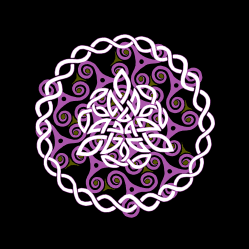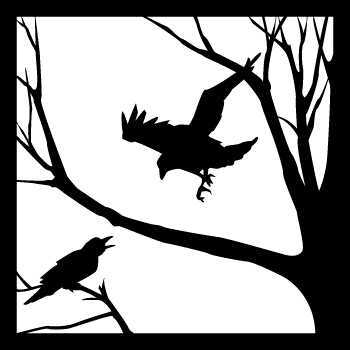


The Morrígan ("phantom queen") or Mórrígan ("great queen"), also written as Morrígu or in the plural as Morrígna, and spelt Morríghan or Mór-ríoghain in Modern Irish, is a figure from Irish mythology who appears to have been considered a goddess, although she is not explicitly referred to as such in the texts.
The Morrígan is a goddess of battle, strife, and sovereignty. She sometimes appears in the form of a crow, flying above the warriors, and in the Ulster cycle she also takes the form of an eel, a wolf and a cow. She is generally considered a war deity comparable with the Germanic Valkyries, although her association with a cow may also suggest a role connected with wealth and the land.
She is often depicted as a trio of goddesses, all sisters,[1][2][3] although membership of the triad varies; the most common combinations are Badb, Macha and Nemain,[4] or Badb, Macha and Anand; Anand is also given as an alternate name for Morrigu.[5] Other accounts name Fea, and others.[4]
There is some disagreement over the meaning of the Morrígan's name. Mor may derive from an Indo-European root connoting terror or monstrousness, cognate with the Old English maere (which survives in the modern English word "nightmare") and the Scandinavian mara and the Old Russian "mara" ("nightmare");[6] while rígan translates as 'queen'.[7] This can be reconstructed in Proto-Celtic as *Moro-rīganī-s.[8] Accordingly, Morrígan is often translated as "Phantom Queen". This is the derivation generally favoured in current scholarship.[9]
In the Middle Irish period the name is often spelled Mórrígan with a lengthening diacritic over the 'o', seemingly intended to mean "Great Queen" (Old Irish mór, 'great';[10] this would derive from a hypothetical Proto-Celtic *Māra Rīganī-s). [11] Whitley Stokes believed this latter spelling was a due to a false etymology popular at the time.[12] There have also been attempts by modern writers to link the Morrígan with the Welsh literary figure Morgan le Fay from Arthurian romance, in whose name 'mor' may derive from a Welsh word for 'sea', but the names are derived from different cultures and branches of the Celtic linguistic tree.[13]

